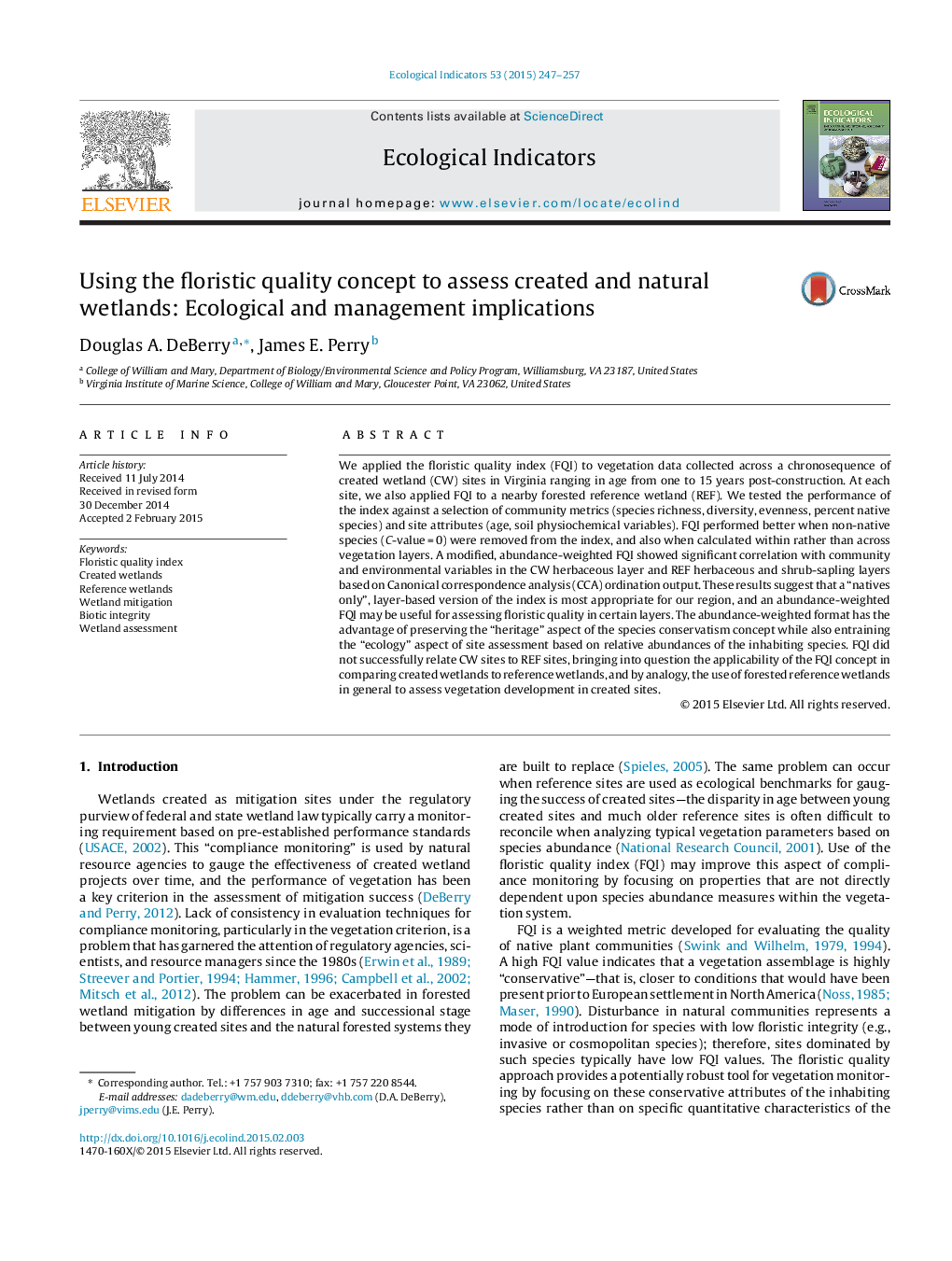| Article ID | Journal | Published Year | Pages | File Type |
|---|---|---|---|---|
| 6294451 | Ecological Indicators | 2015 | 11 Pages |
Abstract
We applied the floristic quality index (FQI) to vegetation data collected across a chronosequence of created wetland (CW) sites in Virginia ranging in age from one to 15 years post-construction. At each site, we also applied FQI to a nearby forested reference wetland (REF). We tested the performance of the index against a selection of community metrics (species richness, diversity, evenness, percent native species) and site attributes (age, soil physiochemical variables). FQI performed better when non-native species (C-value = 0) were removed from the index, and also when calculated within rather than across vegetation layers. A modified, abundance-weighted FQI showed significant correlation with community and environmental variables in the CW herbaceous layer and REF herbaceous and shrub-sapling layers based on Canonical correspondence analysis (CCA) ordination output. These results suggest that a “natives only”, layer-based version of the index is most appropriate for our region, and an abundance-weighted FQI may be useful for assessing floristic quality in certain layers. The abundance-weighted format has the advantage of preserving the “heritage” aspect of the species conservatism concept while also entraining the “ecology” aspect of site assessment based on relative abundances of the inhabiting species. FQI did not successfully relate CW sites to REF sites, bringing into question the applicability of the FQI concept in comparing created wetlands to reference wetlands, and by analogy, the use of forested reference wetlands in general to assess vegetation development in created sites.
Keywords
Related Topics
Life Sciences
Agricultural and Biological Sciences
Ecology, Evolution, Behavior and Systematics
Authors
Douglas A. DeBerry, James E. Perry,
